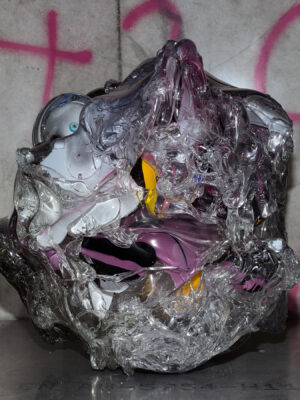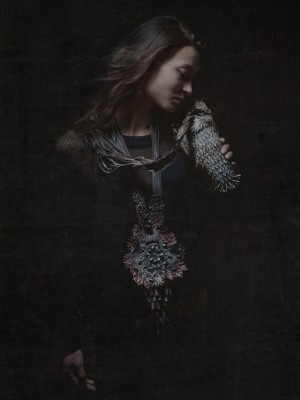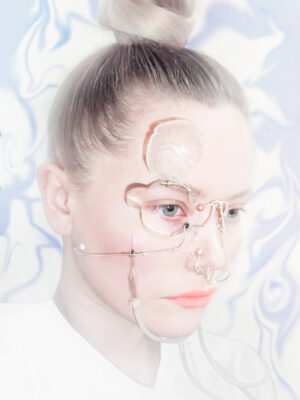Current Obsession: Can you talk a bit about the set-up of The Garage, who started the initiative?
Fredrik Nielsen: It was myself and my colleague Patrick, and we decided to set up our own space away from the gallerists. It was started in 2015 and it was self-funded. We rent out 3 studio spaces to Matilda Kästel, Irina My and Martin Arvidsson. Then we have the main workshop where people can rent glass blowing equipment for specific projects. Beginners can also book a time here to use the space if they want to learn the material. The site is perfect for us because no one cares what we do here, we can be freely creative within the space.
CO: How does the open glass blowing studio work, do people drop in?
FN: People contact us through Instagram and the website. It’s usually friends that talk to somebody who knows the place already. I think it is better, when people really want to learn rather than come in with a sketch or a very preconceived idea of what they want to make. You have a drawing, and then you’re going to try and make that out of hot syrup? It’s better if at first, you don’t pay anything, come and hang out. When we blow glass, you might be able to help a little bit. You can watch – that’s a better way to get into it.
On a personal level, I developed so much skill from doing the classes; it’s one thing blowing glass yourself but helping other people helps you to become better after a while.
I think craft these days, it’s really valuable. It’s the greatest thing to be open and share what you’re making.
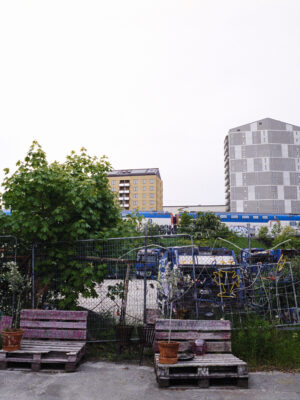
CO: What kind of people are attracted to the open sessions at The Garage?
FN: We have some regular people that continue to come, and some people come for a specific project. People from different parts of society come in like, hey, I want to try, I want to become good. We even blow glass with people working in banks.
CO: How does the experience of glass blowing for the first time compare to after you have been working with the material for a while?
FN: It’s nice to see the excitement in the beginners – they’re like wow, I made a blue bowl for chips. So great! For me, I’m like a drug addict with glass. If I make a nice cup, I don’t feel anything anymore. I have to go somewhere else, beyond aesthetics. Reaching some kind of limit all the time. But you have to do the work, you have to try the material, spend the time and see what’s possible. You will see how hard it is and it’s also really dangerous. You can really burn yourself. Guess after a long long time it’s starting to become something else than just making nice things. You might become a painter within this material, an artist perhaps.
For me blowing glass is almost like plugging in a guitar, not knowing exactly what to make. It’s almost like a jazz band experience. The expectations can be too high – people come in with a drawing and say I want to make something exactly like this. But you’re going to try and make that in hot glue, it’s really hard. Instead of just letting it roll, letting it just become – that’s more of an experience. And not everything is possible. If you are 10 or 20 years down the line, after working at it, crying over the material, hating it, loving it, and still keep coming back to it – that’s different from playing just one time. For me, it’s really important to make everything yourself. It s important to work on your own language, no one else can do that for you.
I’m reusing my old pieces all the time, as a painter. Like hitting back up a piece that I did many years ago and adding to it until it becomes something else.
“For me blowing glass is almost like plugging in a guitar, not knowing exactly what to make. It’s almost like a jazz band experience.”
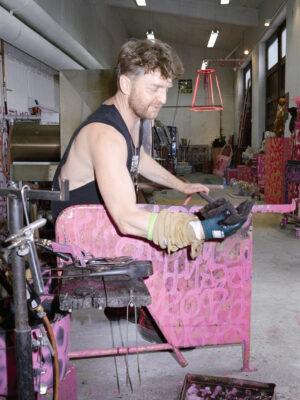
CO: You mentioned before about your experience in the USA and alternative art scenes. How do you think the scene in Stockholm differs from these places?
FN: When I was glass blowing in Seattle, if somebody could see I was working hard and really engaged with it, I might get a phone call a month or so later, something like: ‘hey, do you want to come and teach? I work at a place, a glass studio in Boston.’ So I came up with an idea for that class, and I went over there to teach it.
A couple of years later in Sweden, the opposite is true. I saw a glass caster that I have admired for maybe 10 years at an opening and she asked me ‘Are you Fredrik Nielsen?’ We talk a bit, but then, Bye and nothing happens. This is something that I think is changing here though.
CO: The Garage seems to emulate a sense of openness in the community. What is your opinion of the current standing of the art scene in Stockholm? Did you have an idea to change it with the Garage?
FN: In Sweden, we are not so exposed to culture as you might be in the UK or France for example. There you might go to museums every weekend growing up; here maybe you go to the Modern Museum one time, and unless you have parents interested in culture, you never really see it. That’s why events like craft week are so important to reach out to people; because I think they do want it and are interested. People also want to create for themselves. I think building culture is important – it’s cool if you live here and can look down on a place like this.
We are a small country and the art scene becomes very provincial here. You could be a big hotshot in Sweden, but as soon as you step into Europe you might not be so great. I don’t like to call myself a glass artist, because that’s cheating. If I’m a glass artist I can be the world’s greatest glass artist, but just as an artist, I could be the worst.
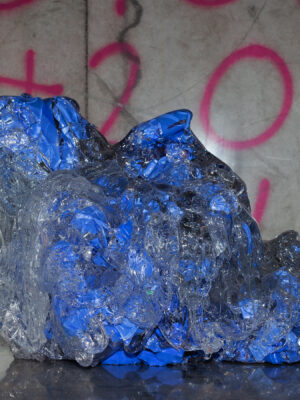
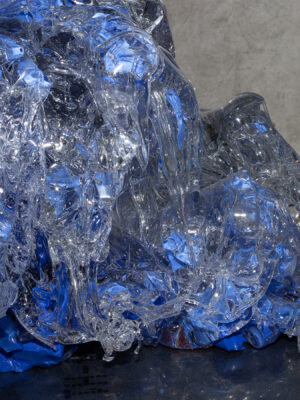
CO: What is The Garage planning during the Craft Week?
FN: We will have some glass blowing demonstrations that people can watch. We have Olle Wärme who just graduated from art school who makes these intricate glass spiders, so he will do a lampworking demonstration. Ylva Holmén will do a demonstration on Saturday and Matilda Kästel and Nina Westman on Sunday. I will do a demo on Friday night with my team. We will also have a food truck so that people can come and hang out for a bit here.
PERFORMANCE • Broken Social Scene
1 oktober 18.00-20.00 Fredrik Nielsen
2 oktober 12.00-14.00 Olle Wärme (Lampworking), 15.00-17.00 Ylva Holmén
3 oktober 12.00-14.00 Matilda Kästel, Nina Westman
This article was commissioned by Stockholm Craft Week 30 September-3 October 2021, and produced by Current Obsession, Veronika Muráriková and Lizzie Abbott.
